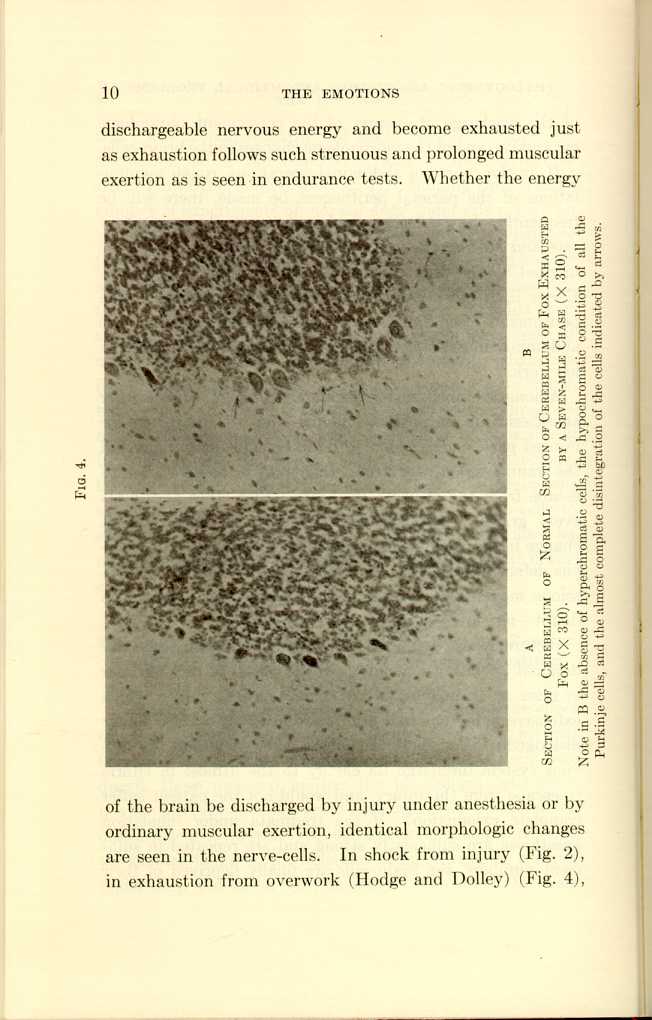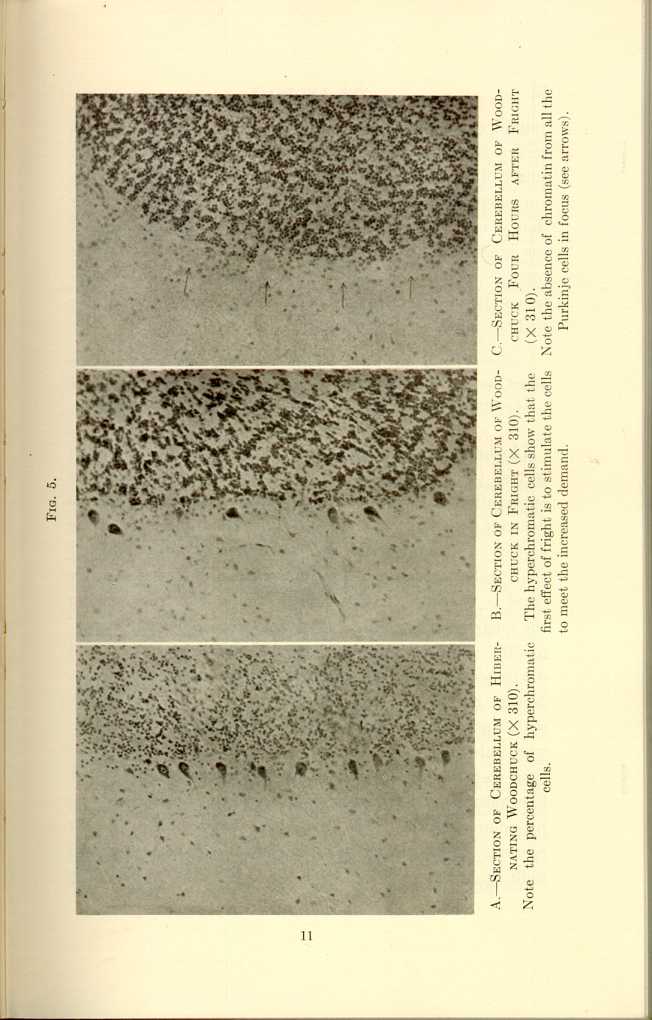| The Origin and Nature of the Emotions: Miscellaneous Papers | ||
The Cause of the Exhaustion of the Brain-cells as a Result of Trauma of Various Parts of the Body under Inhalation Anesthesia
Numerous experiments on animals to determine the effect of ether anesthesia per se, i. e., ether anesthesia without trauma, showed that, although certain changes were produced, these included neither the physiologic exhaustion nor the alterations in the brain-cells which are characteristic of the effects of trauma. On turning to the study of trauma, we at once found in the behavior of individuals as a whole under deep and under light anesthesia the clue to the cause
If, in the course of abdominal operations, rough manipulations of the parietal peritoneum be made, there will be frequently observed a marked increase in the respiratory rate and an increase in the expiratory force which may be marked by the production of an audible expiratory groan. Under light ether anesthesia, severe manipulations of the peritoneum often cause such vigorous contractions of the abdominal muscles that the operator is greatly hindered in his work.
Among the unconscious responses to trauma under ether anesthesia are purposeless moving, the withdrawal of the injured part, and, if the anesthesia be sufficiently light and the trauma sufficiently strong, there may be an effort toward escape from the injury. In injury under ether anesthesia every grade of response may be seen, from the slightest change in the respiration or in the blood-pressure to a vigorous defensive struggle. As to the purpose of these subconscious movements in response to injury, there can be no doubt—they are efforts to escape from the injury.
Picture what would be the result of a formidable abdominal operation extending over a period of half an hour or more on an unanesthetized human patient, during which extensive adhesions had been broken up, or a large tumor dislodged from its bed! In such a case, would not the nervous system discharge its energy to the utmost in efforts to escape from the injury, and would not the patient suffer complete exhaustion? If the traumata under inhalation anesthesia are sufficiently strong and are repeated in sufficient numbers, the brain-cells are finally deprived of their

Fig. 4.
A
Section of Cerebellum of Normal Fox (x310).
B
Section of Cerebellum of Normal Fox Exhausted by a Seven-Mile chase
(x310).[d]
[Description: Black and white photos showing microscopic view of cerebellum
of a fox under various conditions.]

Fig. 5.
A
Section of Cerebellum of Hybernating Woodchuck
(x310).[e]
B
Section of Cerebellum of Woodchuck in Fright
(x310).[f]
C
Section of Cerebellum of Woodchuck Four Hours after Fright
(x310).[g]
[Description: Black and white photos showing microscopic view of cerebellum
of a woodchuck under various conditions.]
| The Origin and Nature of the Emotions: Miscellaneous Papers | ||